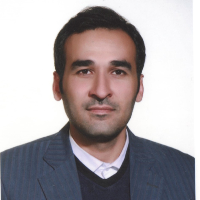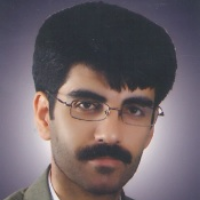Identifying the Scientific Capabilities and Competencies of the University of Tabriz Based on its Social, Cognitive, and Intellectual Capacities
In this research, it is tried to identify and present the basic capabilities and capacities of the University of Tabriz as one of the leading universities in the country in science and technology based on the intellectual, social and cognitive structure extracted from the scientific outputs of this university. This research In addition to being used in the effective management of research and technology at the University of Tabriz, can provide a model for other universities and higher education institutions in terms of methodology.
Regarding its nature, the current research is scientometric, and its approach is quantitative. The population of this research includes all the publications of researchers affiliated with the University of Tabriz (under various names such as University of Tabriz, Tabriz University, and Azarabadegan University) in the journals indexed in the Web of Science (Clarivate Analytics database) in the period from 1973 to the last days of 2016. The time of collecting information was 12/20/2016. Of course, to access some additional information, InCites database was also used. All the references and citations of works published by the researchers of the University of Tabriz are considered the population of this research. Considering the massive amount of references, citations, and bibliographic information in the articles, it was tried in all the networks created to identify the social, cognitive, and intellectual structure, 50 top nodes (author, journal, university, country, term, subject category, cited work, cited author, and the cited journal) are purposefully selected as samples. To further conceptualize the projected social, intellectual, and cognitive maps and structures, it was tried to examine the period from 1967 to 2016 in the form of 5 ten-year intervals to provide the possibility of comparing and separating them from each other.
The findings of this research consisted of drawing, identifying, and analyzing the intellectual, social, and cognitive structure of the scientific outputs of Tabriz University to identify the human, intellectual and scientific capital of this university, to take action for the development based on internal capacities in line with investment based on competitive advantages. Studying the social structure of scientific outputs of this university showed that the structure can be shown with a network with a density of 0.009 and 60 working teams. The best-identified research teams are analytical chemistry, applied chemistry, electrical engineering, physics, and Polymers. Examining the influence of researchers in the creation and management of work teams shows that researchers such as Entezami, Hosseini, Daneshvar, Khanmohammadi, Khandar, and Khatai have been evaluated as the most influential in this regard. Examining the social structure based on partner universities also showed that the Institute of Theoretical Physics had the greatest influence on the researchers of the University of Tabriz. The investigations of this research showed that all the universities collaborating with the University of Tabriz in the production of joint works can be categorized in the form of 22 independent clusters. Also, examining the University of Tabriz's cognitive structure based on the scientific outputs of the university showed 19 identified scientific specialties and qualifications. The cognitive structure based on the keywords of researchers published in JCR indexed Journals is the representation of the top 150 keywords discovered among the keywords used by researchers and 163 links between them. Examining these words in terms of citation effect showed that keywords such as System, Model, Optimization, Behavior, Water, Design, Performance, and Iran are the most influential words. Finally, the findings from the perspective of intellectual structure also showed that this structure can be shown based on a network with 61 independent specialties. The prominent specializations identified in this structure belong to fields such as Electromagnetism, Decolorization, and Thermodynamics, respectively. The intellectual structure obtained using this technique yielded a network that included the top 244 cited authors and 375 intellectual relationships between them. In general, based on this technique, in this research, 61 specializations into which the researchers of the University of Tabriz have entered were identified, introduced, and evaluated, and the most influential, central, and well-known author of each of these specializations was introduced, and the relative novelty of the works of the basic authors was presented.
The University of Tabriz has potential competitive advantages in social and scientific terms that can make it a powerful and effective university. It seems that by looking at the university from this point of view, it is possible to identify effective working, intellectual, and social relationships in national, international, disciplinary, and interdisciplinary scientific communication, and take steps in the direction of effective research and technology policy-making and management.
- حق عضویت دریافتی صرف حمایت از نشریات عضو و نگهداری، تکمیل و توسعه مگیران میشود.
- پرداخت حق اشتراک و دانلود مقالات اجازه بازنشر آن در سایر رسانههای چاپی و دیجیتال را به کاربر نمیدهد.



